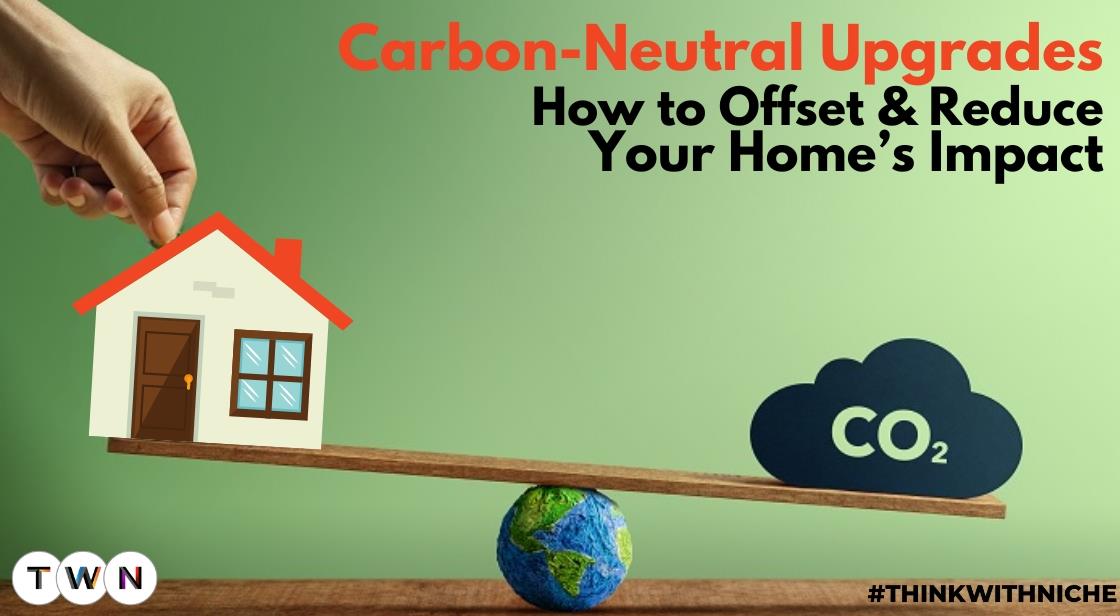Carbon-Neutral Upgrades: How to Offset and Reduce Your Home’s Impact

Blog Post
In an era where environmental consciousness is paramount, homeowners are actively searching for ways to align their living spaces with sustainability goals and minimize their carbon footprint.
This blog delves into actionable insights for homeowners keen on implementing carbon-neutral upgrades.
From embracing eco-friendly energy plans and leveraging natural lighting solutions to fine-tuning thermostat settings and adopting environmentally conscious landscaping, this comprehensive guide provides practical tips.
These strategies empower homeowners to make informed decisions that not only contribute to a greener planet but also create a more sustainable and eco-friendly living environment.
By exploring these straightforward yet impactful home upgrades, individuals can play a pivotal role in fostering environmental responsibility while enjoying the benefits of a modern, energy-efficient home.
Carbon-Neutral Upgrades: How to Offset and Reduce Your Home’s Impact
Many businesses are looking into ways to minimize the impact they have on the environment. But what about homeowners? As a homeowner, there are things that you can do to live a more sustainable life. Here are a few tips that can help you offset carbon emissions and reduce the impact you have on the planet in your lifestyle:
Change your energy plan
There’s a reason why environmentalists encourage people to save energy. It’s one of the best things to do when seeking to offset your carbon footprint. However, with our need for power and electricity in today’s world, what can you do to reduce your impact on the planet?
Fortunately, there are now options for new energy plans that have been created with the environment in mind. Numerous options for powering your home can be more eco-friendly, such as wind turbines or solar panels. As you take a look at your home and your impact, consider prioritizing this change.
Let more natural light in
With many people working from home, the need to use light and power in your home has increased, which means that you could end up having a higher electricity bill and waste more energy throughout the day.
Something you should consider is remodeling your home, whether that means updating with enlarging windows in your home or adding a skylight. More natural light decreases the need for you to constantly have lights on at home, so you save more energy. Additionally, updating the bulbs you use and switching over to energy-saving options can make a big difference.
Revisit your thermostat
If you live somewhere like Texas, where summers can be unbearable, or if you live in places like Chicago, where the winters can bite you to the bone, you know that your thermostat is something you simply can’t live without. But then your bills skyrocket, and you know that you’re using more energy than you’d like.
Consider updating your home’s thermostat to optimize your energy use for heating and AC. If you have a steady schedule outside of your home, you can set it to go into energy-saving mode when you’re not at home.
Also Read: Sustainability Strategies for Businesses: Tips for Going Green
Hang your laundry, sometimes
You may be in a household that has to do laundry multiple times a week. While there will be times when you’ll need to dry clothes, having a clothesline available for the nice days when hanging your clothes outside helps you save more energy.
Consider washing all your non-dryable items together in one day so that you can simply hang them all up together afterward. If you could cut out using the dryer altogether, you could save a lot.
Carefully plan your landscaping
If there’s something that some homeowners don’t think about when looking to reduce their impact, it’s their garden. If you plant local plants, you typically won’t need to use as much water for a flourishing garden, and if you plant plants and greenery around your home, you can both provide a cooling effect for your house in the summer while offering a sort of protection for your home during cold, wintery, and windy months.
Talk to a professional landscaper about the best things you can do for a more eco-friendly garden. A well-cared-for yard is good for the environment, but just make sure you’re planning it well so that you save on energy and water.
In Conclusion
From your garden to your HVAC system, make home upgrades that help you save money and energy. An eco-friendly home helps you reduce your carbon footprint, which is a good thing for you, for us, and for the planet.
You May Like
EDITOR’S CHOICE












